#african american woman of letters
Text
Black History Month
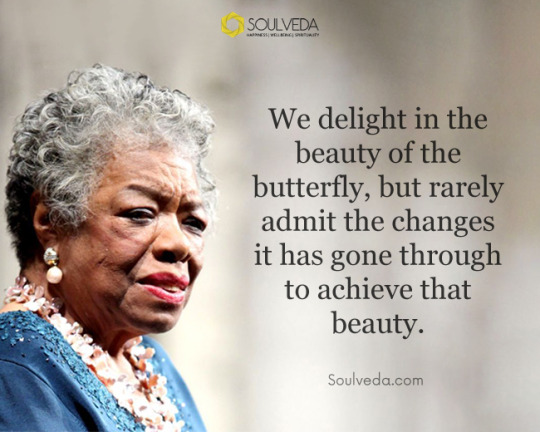
Maya Angelou (American, 1928-2014)
Phenomenal Woman by Maya Angelou
Pretty women wonder where my secret lies.
I'm not cute or built to suit
a fashion model's size
But when I start to tell them,
They think I'm telling lies.
I say,
It's in the reach of my arms
The span of my hips,
The stride of my step,
The curl of my lips.
I'm a woman
Phenomenally.
Phenomenal woman,
That's me.
I walk into a room
Just as cool as you please,
And to a man,
The fellows stand or
Fall down on their knees
Then they swarm around me,
A hive of honey bees.
I say,
It's the fire in my eyes,
And the flash of my teeth,
The swing in my waist,
And the joy in my feet.
I'm a woma
Phenomenally.
Phenomenal woman,
That's me.
Men themselves have wondered
What they see in me.
They try so much
But they can't touch
My inner mystery.
When I try to show them
They say they still can't see.
I say,
It's in the arch of my back,
The sun of my smile,
The ride of my breasts,
The grace of my style.
I'm a woman
Phenomenally.
Phenomenal woman,
That's me.
Now you understand
Just why my head's not bowed.
I don't shout or jump about
Or have to talk real loud.
When you see me passing
It ought to make you proud.
I say,
It's in the click of my heels,
The bend of my hair,
the palm of my hand,
The need of my care,
'Cause I'm a woman
Phenomenally.
Phenomenal woman,
That's me.
from And Still I Rise • Copyright © 1978
#american women#maya anjelou#poet#essayist#black woman wrirer#american writer#african american woman of letters#poetry#contemporary poetry#american poetry#still i rise
54 notes
·
View notes
Text
Celebrating 106 Years of Gwendolyn Brooks
Tomorrow's Authortunities mail out will feature American poet, author, and teacher Gwendolyn Brooks.
Tomorrow’s Authortunities mail out will feature American poet, author, and teacher Gwendolyn Brooks born 106 years ago today on June 7, 1917. She was known for her work that often celebrated and examined the personal struggles of ordinary people in her community.
Brooks was the first child of David Anderson Brooks and Keziah (Wims) Brooks. Her father wanted to be a doctor but he traded that…

View On WordPress
#A Street in Bronzeville#African American woman#American Academy of Arts and Letters#American literature#American poet#Annie Allen#Chicago#Children Coming Home#David Anderson Brooks#Great Migration#Gwendolyn Brooks#In the Mecca#Keziah Wims Brooks#Maud Martha#Poet Laureate of Illinois#Pulitzer Prize in Poetry#The Bean Eaters#The Chicago Defender#U.S. Poet Laureate
0 notes
Text

“No Choice of Colors!” Fear (Vol. 1/1970), #12.
Writer: Steve Gerber; Penciler: Jim Starlin; Inker: Rich Buckler; Letterer: John Costanza
#Marvel#Marvel comics#Marvel 616#Fear#Man-Thing#Ted Sallis#Cover Gallery#….oy vey iz mir#this issue…did not age gracefully#and considering that I can’t find much on it in future letter sections makes me wonder if contemporary reactions were unfit to print#for context the plot of this issue is that Man-Thing helps an African-American man who is fleeing a demonstrably racist cop#the African-American man claims he’s being unjustly pursued because he’s in a romantic relationship with a caucasian woman who won’t give#the cop the time of day#the man’s tale wins over the Man-Thing’s sympathies and assistance only for it to be later revealed that the man omitted#that he’s also on the hook for murder#thus muddying the morals of the situation#Man-Thing tries to just extricate himself from the situation entirely but it ends with both the fugitive and the cop dead#and I mean I GET IT#I’m pretty sure the creators were going for a bleak ‘no one is ever perfectly good/there are sins committed on both sides’#‘everyone loses in these sorts of scenarios’ conclusion#but I can’t help but feel as if by crafting such a narrative that slings mud at both sides they don’t quite condemn either side either?#but this own narrative teaches that trying to be impartial will only wind up with people dead sooo it kind of paints#the story’s own creators as cowardly for not taking a firm stance???#but of course naturally this is all just my opinion#and I do need to remind myself that this was after all written in 1972#only 4 years post the MLK assassination when race relations were looking particularly incendiary for the moment and bleak for the future
1 note
·
View note
Text
Some tangible Black queer history for you!
In case you needed any more proof that we've always been here - this amazing collection is courtesy of the Stonewall National Musuem and Archive!
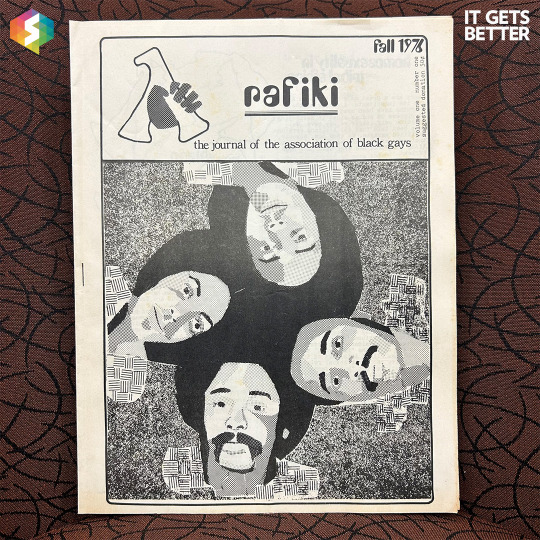
Rafiki: The Journal of the Association of Black Gays, Vol. 1 #1 (Fall 1976)
"Rafiki was a quarterly publication from the Association of Black Gays (ABG), a Los Angeles, California gay activist group that organized through education, political engagement, and grassroots activism to
improve the conditions for Los Angeles’s Black gays and lesbians.
According to the journal, the title Rafiki was chosen because it means “friend” in Swahili and “that’s what [ABG] hope to be for you.” This first issue includes an article on the history of ABG and the fact that Black gays and lesbians have been largely excluded from the political, social, and economic advances of the gay community.
Included in this issue are articles such as “Homosexuality in Tribal Africa” and “Disco Discontent” (an open letter to the owner of Studio One, Scott Forbes), as well as poetry by Steven Corbin and Frances Andrews, and book reviews. It even contains an ad for the famous Catch One Club owned by Jewel Williams, which is still
operating today!"

I Am Your Sister: Black Women Organizing Across Sexualities by Audre Lorde (Kitchen Table: Women of Color Press, 1985; from the Freedom Organizing Series)
You can read this one here!
"This small twelve-page publication derives from a speech Audre Lorde gave at the Women’s Center of Medgar Evers College in New York City regarding the exclusion of Lesbians in the feminist movement and how Lorde’s identity as both a Black woman and lesbian are inextricably linked.
Primarily, heterosexism and homophobia are major issues Lorde states are “two grave barriers to organizing among Black women.” Lorde ends the essay with the statement: “I am a Black Lesbian, and I am your sister.”
Her emphasis on the duality of this identity stems from a 1960s poster that said “He’s not black, he’s my brother!,” which Lorde states infuriated her because “it implied that the two were mutually
exclusive.”
Kitchen Table: Women of Color Press was founded by Barbara Smith—another Black Lesbian feminist—and Audre Lorde in 1980 to create a publishing apparatus for women of color who at the time did not have control over how they were published except through the white-dominated outlets."

Flawless! The Life & Times of T.B.D.J. AKA Tiffani Inc. AKA Mrs. … (Manuscript) by Tiffany Bowerman (July 2007, A&E Publishers)
This autobiographical manuscript traces the life of Tiffany Bowerman aka Tiffany B.D. Johnson (b. 1959), who states that she “was the first African-American Transsexual to have state issued birth certificate reissued [1990]… was the first to legally marry three different active duty military men… [and] first… to found their own Christian Denomination… The Agape-Ecumenical Christian Denomination.”
Further, she states “I have tried to put together something striking and original[,] a journey from childhood to self aware adult. A life that was and is with all regrets included.”
This manuscript is a preliminary copy of a rough draft, and contains various memoirs, photographs, legal documents, and ephemera.
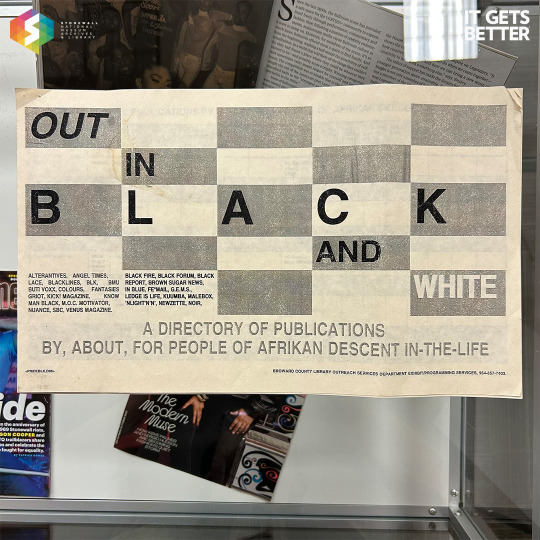
Out in Black and White: A Directory of Publications By, About, For People of Afrikan Descent In-The-Life by the Broward County Library Outreach Services Department Exhibit/Programming Services with direction by Eric Jon Rawlins (January, 1996)
Out in Black and White is a directory of various serial publications (magazines, newsletters, journals, etc.) throughout the United States that are focused on the Black LGBTQ experience. According to the directory, “[t]his project was inspired by the atmosphere of strength, oneness and productivity created by the Million Man March [on October 16,] 1995.”
The Million Man March was a political demonstration that took place at the National Mall in Washington, D.C. with the purpose of encouraging involvement in the improvement of the conditions of African Americans. Eric Jon Rawlins was a Broward County, Florida librarian who at one time was also the second vice president of the NAACP Fort Lauderdale branch in the late 1980s.
Currently, the Eric Jon Rawlins Collection consisting of personal and professional papers, as well as his 6,000 vinyl record album collection, are housed at the African American Research Library and Cultural Center Special Collections in Broward County, FL.
#it gets better#black history month#bhm#black trans lives matter#lgbtqia#queer history#lgbtq history#black history#queer archive#queer lit#studyblr
103 notes
·
View notes
Text

Today In History
Novelist, Toni Morrison, won the “Elmer Holmes Bobst Award” in Arts and Letters for her book, Beloved, on this date November 16, 1988.
Toni Morrison is one of the most celebrated authors in the world. In addition to writing plays, and children’s books, her novels have earned her countless prestigious awards including the Pulitzer Prize and the Presidential Medal of Freedom from President Barack Obama.
As the first African-American woman to win the Nobel Prize in Literature, Morrison’s work has inspired a generation of writers to follow in her footsteps.
CARTER™️ Magazine
#carter magazine#historyandhiphop365#carter#wherehistoryandhiphopmeet#history#cartermagazine#today in history#staywoke#blackhistory#blackhistorymonth#toni morrison
91 notes
·
View notes
Text
Okay it’s no secret I was in the Voltron trenches. But it’s been a few years and most of my mutuals are people who don’t know jack about the show, only that it was bad. So ofc here’s a “which is wrong” poll, specifically about the show/official stuff related to the series, no fandom stuff cuz I don’t feel like it. If a question has a * then I’ve provided more info at the bottom
Asterisk explanations below the cut
*All of the characters of color, except for the black girl, were voiced by white people. Lance, who was Latino, Shiro, who was Japanese, Hunk, who was Samoan/African American, were all voiced by white people. The character voiced by Steven Yeun ended up having an aracial alien mother and a white American father
*There was an official “which paladin are you” quiz in like a magazine or online or smth and one question was “which animal from this list would you pick” and if you picked mostly B’s, which was letter option for the hippopotamus, you’d get Hunk, the fat character (guy was victim of a lot of fat jokes in the show too btw)
*The blind woman was shown to be cool and a capable fighter and we were supposed to like her, especially since she betrayed the bad guys she worked for, but a character the show later tried to frame as sympathetic (the homicidal maniac they pair with Allura, the black girl btw) murders her brutally
*There was a list of stats somewhere I can’t remember, probably a magazine, of how intelligent, strong, etc. certain characters were, and the black girl who’s an alien and shown to be INCREDIBLY strong had stats weaker than a normal human white guy. He was also smarter than her too
*The character Shiro wasn’t actually shown in the show to be gay (not until the finale where they make him marry a random guy they invented due to backlash) the creators just said he was and then the character poorly established as his “husband” is killed by being blown up. It was textbook queerbaiting
118 notes
·
View notes
Text
The BAU and their parents: A summary
A list of the cm characters and their parents and the status of said parents based on what we know from the show
Hotch: His father was mentioned and is implied to be abusive, based on a scene in 1x08. His mother was mentioned to have come from Manassas, Virginia
Emily: Mother is named Elizabeth and is a diplomat. The relationship was strained but the two somewhat reconciled at the end of 2x20, though her mother was never again and was last mentioned in 4x17. There has never been any mentioned of Emily's father, not to mention the uncertainty of whether he's deceased or is alive and divorced
Morgan: Born to an African American father and white mother. His father, Hank, was a police officer and was killed. His mother, Fran, only appeared in 2x12, but was mentioned a couple of times. Hank appeared once in 4x10 and again in 11x16, whom he has a significant role in
Reid: Mother is Diana Reid, who suffers from severe schizophrenia. His father, William Reid, left both Diana and Spencer. William only appeared in s4, him and Reid having a strained relationship, unlike Reid and Diana. Despite Diana's condition, she and Reid still care for each other
Garcia: Lost her parents in a car accident when she was 18. Her stepfather and step brothers are latino, hence her surname "Garcia". Iirc, 3x09 showed her birth parents, whom are also deceased and she mentioned to Luke in 12x01 that she was adopted by the Garcias after losing her original parents
JJ: Has a mother named Sandy, and the two had a somewhat distant relationship, based on 10x06 and 14x12 due to the fallout and unresolved trauma over Roslyn's death. As of 14x12, the two are on more amicable terms. As for JJ's father, he was only mentioned once in 14x12 where it's revealed that he left Sandy and married another woman
Matt: His parents aren't mentioned in cm but are mentioned in 2x04 of criminal minds: beyond borders where it's revealed his mother is named "Mi-Young" and was recently deceased prior to the events in the episode, somewhere in late 2016/early 2017. His father is not mentioned, aside from the fact that he's white and his relatives being racists due to Matt and Mi-Young being Korean. It is unclear if Matt's father is still alive or deceased and if the two have a close or strained relationship
Luke: Based on his and Tara's interactions and the "your mom" jokes in 13x22, it's implied that his mother is still alive. His father was mentioned in Evolution and is revealed to also be in the military and is deceased. His mother has yet to appear at all in the show
Tara: Her father is named Albert, who is ex-military and is still alive as of 12x07, in his first and so far, only appearance. Her mother was mentioned in the same episode and is revealed to have died from breast cancer when Tara was young
Elle: Her father was a police officer named Robert, who was killed in the line of duty. Her last words to him were "I hate you." as she was young and was upset at him for missing her first bicycle ride. He appears in a dream sequence in 2x01, giving Elle a heart-to-heart talk while Elle was fighting for her life in the real world. She would visit his grave in 2x06. Her mother was hardly mentioned at all, unlike Tara and Blake
Blake: Her father is Damon Miller and he used to be the captain of the Kansas City Police Department. Made his only appearance in 9x11. Her mother was mentioned in 9x06 during Garcia's day of the dead themed party, where it's revealed that her mother is deceased
Seaver: Her father is a serial killer named Charles Beauchamp also known as "The Redmond Ripper". Her father is currently in prison and she has yet to see him or even read the letters she wrote to him but it's clear she wants nothing to do with him despite being related due to the fact that he is a serial killer. Not much is mentioned about Ashley's mother aside from the fact that her maiden name is "Seaver", which Ashley used in favor of "Beauchamp" and distancing herself from her father. They were mentioned once in 6x10 and briefly appeared in a vision
Rossi: His father was mentioned only once in 13x18 and is implied to go by "Mr. Rossi"
That's all I can recall. Let me know if I missed anything or anyone
@unitchiefs-blackbirdphoenix, @missmitchieg
#criminal minds#matt simmons#jennifer jareau#emily prentiss#spencer reid#penelope garcia#derek morgan#aaron hotchner#luke alvez#tara lewis#david rossi#elle greenaway#alex blake#ashley seaver
30 notes
·
View notes
Text
speaking of film controversies and the fact that i was thinking about the jihad rehab shit again, it all reminds me that muslim female filmmakers of color maïmouna doucouré (director of cuties) and minhal baig (director of hala) were both accused of trafficking in islamophobic stereotypes for being even mildly critical of their own culture and religion. minhal baig was accused of laziness and islamophobia for writing a narrative around a young woman deciding to stop wearing hijab after being in a taboo and interracial relationship behind her parents’ back. and i don’t need to rehash every horrific thing that happened to maïmouna doucouré, but lost in the ruckus were the callous accusations of islamophobia against a filmmaker who was literally representing elements of her own upbringing in the film. writing for CAIR on medium (while also accusing doucouré of pedophilia), edward ahmad mitchell said this:
For me and other Muslims, this storyline sounds familiar, for it represents how anti-Muslim bigots typically think of the Muslim community — especially immigrant Muslim communities. Polygamist fathers, abused mothers, oppressed young girls, religious zealotry.
Because we have seen this story on the big screen and small screen many times before, we also know how the story unfolds.
Praying and wearing hijab supposedly represent symbols of oppression, so the oppressed must find liberation by disregarding prayer and casting off their Islamic clothing. For anti-Muslim bigots, the less you pray and the less clothing you wear, the more liberated and civilized you are.
doucouré is the child of senegalese immigrants and literally grew up in a polygamous family. and mitchell even acknowledges this, but still accuses her of bigotry and even complains that she equally condemns religious conservatism and secular sexualization.
this section in his article is particularly striking:
If you have any doubt about the film’s potential to reinforce negative stereotypes about Muslims and African immigrants, consider Cuties’ most vocal supporters.
According to Time, “Doucouré…has the support of the French government, who have expressed their wish to use Cuties as an educational tool for teachers, and have invited her to be part of a working group to combat the hyper sexualization of children in society.”
This is no surprise. The French government is openly hostile to Islam and Muslim immigrants. So is a large segment of France’s population. A film about a Muslim immigrant who liberates herself from her devoutly religious family fits perfectly into French stereotypes and expectations of Muslims.
Indeed, Doucouré should ask herself why French and American film studios were willing to fund, distribute and elevate her script over the many other positive stories that could be told about Muslims and immigrants in France. Other filmmakers who find Hollywood success with scripts about Muslims who disregard their faith traditions should ask themselves the same question.
(emphasis mine)
that is exactly the kind of criticism jihad rehab got. like exactly to a T, from the initial criticism that got it censored, to the later open letter from 5 former guantanamo detainees.
doucouré was also accused of, essentially, white feminism in filia, by natalya vince:
The fact that it is a young, Franco-Senegalese female director who has made a film which reproduces stereotypical representations of Black and Muslim women and girls in France makes it even more important to underline that Mignonnes is the product of something much bigger than its director. That is to say, it is the product of a structurally racist and sexist French film industry which ultimately decides what kind of stories get out there and which don’t see the light of day and which has an unenviable track record in putting women and girls in exploitative situations on set. Mignonnes is a deeply reactionary film, whose uncritical hypersexualised representation of 11-year-old girls is the dangerous but logical result of a half-digested message about individual empowerment and agency which fails to engage in structural power imbalances of age, sex, race and class.
vince also accuses her not only of being a stooge for the french government (because her film received funding from them, which is completely normal for small indie films. plenty of films by britons of color are partially financed by the british government’s film programs), but she also accuses her of exploiting the young actresses in the film, and cites the fact that there was one child psychologist on set, even contrasting it with the fact that there were two dog handlers. she claims that doucouré cared more about the dogs (twice as much she says!) than the children; it never occurs to her that a dog handler and a child psychologist have very different roles on a set, that dog handlers are not employed for the dog’s benefit, and that perhaps a small indie film could not afford to employ several fucking psychological professionals.
i’m going to stop because this post got way longer than i intended but my point is. people pretend when they advocate for censorship of white women’s works or are unfair in their treatment of films by or about white women that it is only about anti-racism. but you would be a fool to pretend like you don’t notice that women of color are subjected to the exact same sexist bullshit and often with more extreme backlash. other women of color subjected to this kind of shit: misha green, lena waithe, chloe zhao, and the list goes on. chloe zhao at least avoided a backlash that derailed the success of her film (nomadland), but her marvel movie had the worst showing of the 2022 releases (it was bad but they’re all bad). misha green’s show was unceremoniously cancelled (again) and lena waithe still enjoys success in television, but queen & slim was derailed by the backlash.
#and so on#there are other women its just past 1am and i don’t feel like doing anymore research/remembering#then this post wil be even longer
158 notes
·
View notes
Text
LETTER'S TO MY LOVELY
Shinichi Okazaki x American!OC
"I Love You"



Main Pairing ~ Shinichi Okazaki x American!OC
Warning ~ Neglective parents, moving countries, naivety, and coming of age.
Spoilers ~ Yes!!
Masterpost ~ Here.
Beta Read/Edited ~ No (No Beta Lmao)
Word Count ~ 1.5k Words.
Chp Summary ~ Shinichi looked like a whirlwind had barreled over his body and swept him up in a storm. He was sweet like honey, nice as could be. He was truly everything, even from a first glance.
Chp 1 ~ Lovely, as Sweet as Honey.
Living in Tokyo was never something Penelope Brown thought she would be doing at fourteen.
The girl thought she would be going to school dances, and fretting about what skirt to wear at her public school in America.
The girl thought she'd be worried about maintaining steady grades, and staying up for all-nighters.
The girl even envisioned giggling with other school girls about boys at sleepovers.
Girlhood is what she thought she'd have; not being shoved full force into uprising adulthood, and at a private boarding school nonetheless.
Being shoved into a mold meant for perfection, being polished into a refined lady, is something she never envisioned for herself.
Not quite yet had she wanted to ripen into adulthood.
Penelope wanted girlhood that came straight out of the cliché movies with friends and petty problems.
Too bad that girls don't get what they want; and women understand that. A woman was not something she was yet, mentally at least.
But even so: possibilities are the endless opening for more opportunities.
How could she pass up the once-in-a-lifetime chance to go to Japan? Her parents were average middle-class African Americans, they wanted her to take flight from the nest as soon as possible. So, after an extremely short conversation with each other, they inevitably encouraged her transfer.
If not due to how it would look on her resume, they also claimed that she would be able to broaden her horizons. Maybe she would figure out what career path she wanted to pursue, and the school would support it.
Penelope thought it was because they wouldn't have to take care of her anymore, and they got boasting rights that their daughter was going overseas.
She didn't voice her opinion to spare herself from an argument; plus she was too beside herself that she would be leaving the hellfire that is Florida, and her friends behind.
Her parent's might've been neglecting, but they weren't physically abusive.
She still harbored love for them, as manipulative as that love was.
Penelope didn't want to leave America. She didn't care that her grade average was high, there were kids smarter than her, so why her?
She didn't even know what she wanted to do with her life.
So, like the naive little girl she was, she begged for change.
She begged through hitching sobs and wet lashes up at the moon, like it was some deity. She childishly wished for an opportunity to live out her dreams of girlhood, even if she was confined in a Japanese boarding school.
Still, she was just a girl. And girls didn't get exactly what they wanted after all.



It was such a first-world problem, to want to have a school life like one of those cute shoujo mangas she'd been reading recently.
Penelope gave that thought a wet, humorless laugh. She swung her legs back and forth, childishly, over the gray stones that bordered the Tama River.
She was a top-grading student at her junior high in America, and was being granted the opportunity of a lifetime. Yes, she was going to be chucked into Japanese society as a transfer student.
She should've been overjoyed that her school chose her to attend school at their newly opened sister school. She should've been even happier that her parents agreed to the terms of her moving overseas.
Penelope should've been overjoyed. She should've been jumping for joy; she got to attend a private boarding school with some of the brightest minds of her generation.
The school had so many different courses that she didn't even know what to choose as her main curriculum, and ultimately chose general studies.
Possibilities are the endless opening for more opportunities; she'd choose a career eventually.
Junior high was filled with boys, dances, and fun, wouldn't high school be the same?
Penelope prayed to whatever deity that would listen for an exciting life, one that emulated a girlhood the way she'd envisioned.
Ever the greedy soul, wanting more, Penelope got just what she wanted sitting on the late-night train to Shinjuku, Japan.
She'd just left her spot in Chofu by the Tama River. The smooth rocks she sat at were near an apartment complex, that was older judging by its architecture, but had an old luxury feel to it.
Penelope wished she could have lived there instead of having to move into a dorm room. The brown-skinned girl picked at the edges of her sparkly pink nail polish, wondering if she'd have a roommate.
She'd have to return to the hotel the school was providing her to stay in until the new school year started. For now, she stayed half a mile outside the school grounds and was trying to get familiarized with the area before April.
The doors were close to closing when a lanky boy slunk his way through the gap of the closing doors.
He bent down on his right knee with his hand clutching a shiny black belt, in the other hand, he clutched his cell phone impossibly tight.
Muffled yells filled the slightly empty train car, the boy still panting in his soaking wet clothes. Light hazel eyes flitted over the filled seats of the train car, he looked frightened almost.
The train car's door shut with a hiss, and the wheels started to squeak as the train sparked to life. The teenage boy still hadn't sat down yet, making a crease of confusion in Penelope's brow as she took in the empty spaces.
It wasn't as if the boy was just standing, waiting for his stop; he looked like he didn't know what to do with himself as he stood directly in front of the double doors. The doors nearly clipped his clothes as they closed.
Penelope took out an earbud that was connected to her Motorola Razr phone, and waved her hand tentatively.
A small smile graced her lips when the boy clicked a button on his phone, and pushed his antenna down. He took a seat beside her.
Shoving his phone into his wet jean pocket, the boy gave a small reassuring smile back at her. Penelope blinked, looking away from the boy who had a small swipe of red lipstick staining his lip and chin.
The boy muttered a small greeting; the brown-skinned girl smiled a little wider and attempted to keep her eyes off of the boy.
The girl's syrupy eyes were shining with glee as he sat next to her. A pregnant pause of silence enveloped them as the train started to pick up speed. Penelope noted how the boy had a pale skin tone compared to the slight tan that graced the skin of Japanese natives.
Penelope, as an African American girl, was expected to be several shades darker than the rest of her peers.
It would isolate her further besides not being Einstein intelligent.
The girl shook her head at the thought. The first school semester hadn't even started, the negative thoughts that plagued her mind were from nerves. She shouldn't be so negative when nothing has happened.
However, Penelope got strange looks from random people when she walked by them, and squirmed as their stare flamed her body.
She wouldn't want someone else to feel that way with her staring. She didn't want to make an assumption in her mind about his features, or why he looked so disheveled as he tied the laces of his sneakers.
The teen girl just muttered a greeting back trying to exile the thoughts.
The teens' clothes looked uncomfortable with the way they clung to his skinny form. Penelope didn't think as she muttered, “Tough night?” In English before going to correct herself in her limited Japanese.
The glum expression of empty sadness was replaced with amusement as the boy nodded.
Penelope felt the tips of her ears grow warm with embarrassment as she started to sputter an apology. For the first time, Penelope wished she could not speak to evade the embarrassment.
“Yeah actually,” The boy responded in English with an air of surprise around him. A posh British accent with a hint of a foreign twang graced her ears.
A grin spread on his face, “You're accents different,” He said curiously, eyes crinkling into half moons as he gave her a sly boyish grin.
“I'm American,” She started and stuck her hand out politely with a shy smile.
“My name's Penelope, what's yours?” She said hesitantly, attempting to make a new friend without coming off so seemingly like herself.
The boy seemed different, more mature as he spoke without a stutter. He was good at making small talk like adults did to be polite; nothing to do with the lipstick that stained his pale skin so obviously, or even to question in her head, why he was holding his belt.
The boy grasped her warm hand in his cold, damp one. His touch was gentle, and the pads of his fingers rubbed a quick circle into her palm politely with a firm shake.
“Shinichi Okazaki, a pleasure to meet you, Penelope,” He said, moving his body closer to hers.
Penelope could feel his wet clothes seep her own with cool dampness, his side entirely pressed against her as if she was a familiar person to him already.
Penelope disregarded that fact, just happy to have a social interaction that wasn't forced.
A silver-studded designer earring caught her wide-eye's attention. The close proximity to the boy and height difference, despite being seated, made her crane her neck to look into his eyes.
They were several shades lighter than her own, a hazel coffee brown that seemed warm and comforting. She analyzed the features of his face freely as she was taken off guard by his friendliness.
Penelope blinked back in surprise and gave the boy a gummy smile, pearly whites on display due to his kindness.
Shinichi was lovely, the naive girl decided. A lovely boy her age who was as sweet as honey, a friend, a good opportunity to have a sense of companionship with.
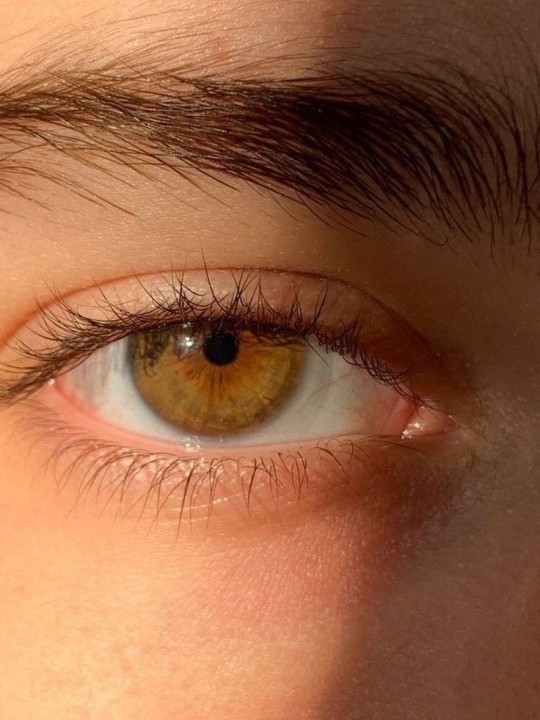


Shinichi, I still think you're lovely, even if you don't think that way about yourself.
Not much has changed about you to this day. You're like dark chocolate; sweet and tangy.
Even though I believe our lives would have been different, maybe it was a blessing that we met that night. Maybe it was a curse.
After all, that's what love is, right?
I said before that I wished we never met, but I'm glad we did. Who knows what would've happened if we didn't ever meet?
I know for a fact you would have made it in life regardless, the resilient man you are. I'm glad I got to experience you, even if I am frustrated that you will never be mine.
Thank you for taking my hand in yours that night. I don't think my palm will fit so perfectly with another's, other than you.
You've ruined every aspect of love for me. I'm grateful I even got to experience it with you.
I love you,
Penelope.
#shinichi okazaki#nana imagine#nana anime#nana manga#possessive shinichi okazaki#protective shinichi okazaki#hurt/comfort#shinichi okazaki x poc!oc#shinichi okazaki x fem!oc#shinichi okazaki x reader#???? i annually dont think that applies technically its an oc#shin imagine#black stones#blast#trapnest
16 notes
·
View notes
Text
“Before the American Revolution, New Englanders viewed the family as a strict hierarchy, an arrangement in which power flowed from top to bottom: The father was ruler of all, the mother was underneath him, and the (theoretically) obedient children were at the bottom. After 1800, however, that ideal changed. Book and magazine writers began picturing families in which men controlled the public realm of politics and business, but women took responsibility for the private sphere of the home. A marriage was viewed more as a partnership; true, the woman was still the junior partner, but the older model of the man as an absolute ruler was no longer fashionable among middle-class Northeasterners.
…Because the man felt he was putting so much on the line by proposing, a ‘proper’ woman was expected to return a well-reasoned reply within a short period of time. A woman knew, however, that her response was perhaps her last chance to have control over her life. Once she said ‘yes,’ the legal cards would be stacked against her, regardless of the declarations of love by her suitor. Because the expectations of middle-class marriage had been raised so high, women found reports of marital disasters very disconcerting. One married woman wrote to a single friend that marriage was a ‘sad, sober beverage’ that brought ‘some joys, but many crosses’.
…Once married, the suitors often cooled the fiery protestations of love found in their letters. Although many couples developed strong, deep bonds of affection, the idea of separate spheres--that women should stay at home, and men go out in the world--kept them apart for many hours of their lives. Advice books and religious sermons emphasized that wives were to make the home a haven of restfulness for their husbands.
This separation of duties provided women with other companionship, however. The split between home and work strengthened friendships between women as they came to understand what they shared with each other and how their lives differed from men’s. Unlike a wife’s relationship with her husband, a friendship with another woman was based on equality. Although women developed networks of friends and relatives, intense relationships between two women were not uncommon.
…Although divorces were growing faster among the urban northern middle class than any other group, such separations were still rare. Within the United States, only one in a thousand marriages ended in divorce before the Civil War. If a woman successfully sued for divorce, she would soon be wondering what price she had paid for her freedom. Alimony, or money paid regularly by a husband to his former wife, was rarely awarded, although judges occasionally ordered one-time cash settlements to women who had been abused by their husbands. If a woman had brought property into the marriage, she was not likely to take it back out. Once she and her husband said their ‘I do’s,’ her husband legally controlled all she owned. Her chances for finding work were few, especially if she was approaching or beyond middle age.
…The nature of farming meant that women and men worked the same land, that women helped produce food and earn cash. Women thus saw the farm as a mutual effort. Frontier women were also less concerned than their eastern contemporaries with raising perfect families. On the frontier, children were valued as workers and companions. These conditions made for a more pragmatic approach to child rearing. Children were an important part of the work force on a prairie farm. While the size of northeastern middle-class families was shrinking dramatically during this period, frontier families were holding steady, averaging around seven children each. Compared to northeastern women, frontier women married earlier, had children earlier, and continued to give birth for more years--often past the age of 45.
…Marriage relations between enslaved African Americans in the South changed little during the early 19th century. Legally, a master owned a slave and could compel that person to do whatever he wished. However, most slaveholders wanted their slaves to pair off and often sanctioned slave unions with their blessing, but marriages between slaves were not recognized legally. Nonetheless, most slave owners had at least one eye on their finances in supporting a slave’s choice in marriage. A typical plantation manual advised slaveholders that a slave marriage based on love would add ‘to the comfort, happiness, and health of those entering upon it, besides ensuring greater increase.’ Such marriages produced both stability and more slaves, two requirements of a successful plantation operation.
…Although many black couples exhibited as much restraint as middle-class couples up North, it was not uncommon for children to be born out of wedlock because slave culture did not make outcasts of unwed mothers. Instead, the slave community expected the new father and mother to wed, whereupon the newborn was immediately accepted into the community. Black couples made an extra effort to respect personal boundaries in an effort to replace some measure of the self-respect their owners tried to strip from them. Indeed, a number of white observers noted that while slave couples often adhered to Christian notions of sexual restraint, their aggressive masters frequently did not.
…Southern plantation women married earlier than northern women, usually around the age of 20. By their mid-20s, when middle-class Northerners were marrying, single plantation women were being labeled ‘old maids.’ The southern ‘belle’ was spared nothing by her doting parents--she could purchase the latest fashions, then quickly discard them for a new ensemble. She lived in a sheltered world, punctuated by frequent balls and daily rounds of social calls to other fashionable women in the neighborhood.
…Marriage relations among the southern planter class were in many ways an exaggerated version of those among the northeastern middle class. While virginity before marriage was expected for northeastern women, southern planter society placed an absolute premium on the bride’s ‘purity’. Northeastern women were placed on a platform and praised for their selflessness and moral rectitude. Plantation women were put upon a gilded pedestal, and southern writers extolled the refinement, piety, and grace by which these women surpassed all others. The result was a tightly constrained life that offered southern women few opportunities to move beyond the boundaries their society had established for them.”
Michael Goldberg, “Reasons of the Heart: Marriage and Courtship.” in Breaking New Ground: American Women, 1800-1848
9 notes
·
View notes
Text
The Black Woman Artist Who Crafted a Life She Was Told She Couldn’t Have
The sculptor Augusta Savage at work in her studio in Harlem.
At the dawn of the Harlem Renaissance, Augusta Savage fought racism to earn acclaim as a sculptor, showing her work alongside de Kooning and Dalí. But the path she forged is also her legacy.
By Concepción de León
Published March 30, 2021
In 1937, the sculptor Augusta Savage was commissioned to create a sculpture that would appear at the 1939 New York World’s Fair in Queens, N.Y. Savage was one of only four women, and the only Black artist, to receive a commission for the fair. In her studio in Harlem, she created “Lift Every Voice and Sing,” a 16-foot sculpture cast in plaster and inspired by the song of the same name — often called the Black national anthem — written by her friend, James Weldon Johnson, who had died in 1938.
The sculpture was renamed “The Harp” by World’s Fair organizers and exhibited alongside work by renowned artists from around the world, including Willem de Kooning and Salvador Dalí. Press reports detail how well the piece was received by visitors, and it’s been speculated that it was among the most photographed sculptures at the Fair.
But when the World’s Fair ended, Savage could not afford to cast “The Harp” in bronze, or even pay for the plaster version to be shipped or stored, so her monumental work, like many temporary works on display at the Fair, was destroyed.
The story of the commission and destruction of “The Harp” and its eventual fate is a microcosm of the challenges Savage faced — and the ones Black artists dealt with at the time and are still dealing with today. Savage was an important artist held back not by talent but by financial limitations and sociocultural barriers. Most of Savage’s work has been lost or destroyed but today, a century after she arrived in New York City at the height of the Harlem Renaissance, her work, and her plight, still resonate.
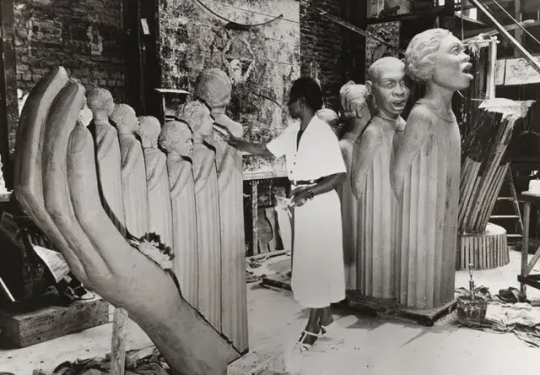
Augusta Savage at work on the sculpture that would become known as “The Harp.” Credit... via The New York Public Library
“Disagreeable complications”
Savage, born Augusta Christine Fells in Green Cove Springs, Fla., in 1892, was the seventh of 14 children. She started making animal sculptures from clay as a child, but her father strongly opposed her interest in art. Savage once said that he “almost whipped all the art out of me,” according to the Smithsonian American Art Museum.
Savage arrived in Harlem a century ago in 1921 in the early years of the Harlem Renaissance. She was nearly 30; had already been twice married, widowed and divorced; and had a teenage child, Irene, whom she left in the care of her parents in Florida. She applied and was accepted to the Cooper Union art school, and completed the four-year program in three years. She took the surname Savage from her second husband, whom she divorced. In 1923, she married Robert L. Poston, her third and final husband. Poston died a year later.
The year she married Poston, Savage was one of 100 women awarded a scholarship to attend the Fontainebleau School of Fine Arts in Paris. But when the admissions committee realized that it had selected a Black woman, Savage’s scholarship was rescinded.
In a letter explaining the decision, the chairman of Fontainebleau’s sculpture department, Ernest Peixotto, expressed concern that “disagreeable complications” would arise between Savage and the students “from the Southern states.”
Savage did not accept the rejection quietly. “She used the Black press to make the limits that she was facing known to the larger national and international public,” Bridget R. Cooks, an art historian and associate professor at University of California, Irvine, said. “She had a real determination and sense of her own talent and a refusal to be denied.”
In the years after the Fontainebleau episode, Savage was commissioned to create busts for prominent African-American figures such as the sociologist and scholar W.E.B. Du Bois and the Jamaican activist Marcus Garvey. She also created “Gamin,” a painted plaster bust portrait based on her nephew that became one of her most well-known pieces, praised for its expressiveness. (It was later cast in bronze.)
“Gamin” earned her a Julius Rosenwald fellowship in 1929 to travel to Paris, which had become a refuge for Black artists, including the painter Palmer Hayden and the sculptor Nancy Elizabeth Prophet. Savage studied at the Académie de la Grand Chaumière and had works displayed at the Grand Palais and other prominent venues.
When she returned to Harlem in 1932, she opened the Savage Studio of Arts and Crafts, where she taught prominent artists such as Jacob Lawrence, Gwendolyn Knight, Norman Lewis and Kenneth B. Clark. Clark later turned to social psychology and developed, with his wife Mamie, experiments using dolls to show how segregation affected Black children’s self-perception.
The community-driven education that Savage championed is part of the African-American tradition, Dr. Cooks said, because Black people have historically been excluded from formal academic spaces. “But for her to open her own school is something entirely different,” Dr. Cooks added. “That is becoming a business person. That’s taking on a leadership role for which she doesn’t have any models in terms of Black people in the art world and Black women in particular. ”
In 1934, Savage became the first African-American member of the National Association of Women Painters and Sculptors (now the National Association of Women Artists). In 1937, she worked with the W.P.A. Federal Art Project to establish the Harlem Community Art Center and became its first director. Eleanor Roosevelt, who attended its inauguration, was so impressed with the center that she used it as a model for other arts centers across the country.

Gwendolyn Bennett, Sara West, Louise Jefferson, Augusta Savage and Eleanor Roosevelt in 1937. Credit... The New York Public Library/Schomburg Center
“She created a pathway for careers for Black artists,” Tammi Lawson, the curator of the art and artifacts division of the Schomburg Center, which has the largest holding of Savage’s work, said. “She taught them, she gave them the tools, and she got them work.”
Sandra Jackson-Dumont, the director and chief executive officer of the Lucas Museum of Narrative Art in Los Angeles, agrees. “She, for me, represents someone who believed that she wasn’t compromising her studio practice or who she was by teaching and bringing people along,” said Ms. Jackson-Dumont, adding that Savage understood “how to use the system’s resources to catalyze folks.”
Yet the later years of Savage’s artistic career were marked by adversity. After taking a hiatus to work on her sculpture for the World’s Fair, Savage returned to the Harlem Community Art Center to find that her job had been filled. She briefly tried to establish the Salon of Contemporary Negro Art in Harlem in 1939, but the gallery lasted only three months.
“Joe Gould’s Teeth,” a 2016 book by the historian Jill Lepore, revealed archival evidence that Gould, an eccentric writer, had harassed Savage by calling her incessantly, insulting her, following her to parties and telling people she had agreed to marry him. In the early 1940s, Savage abruptly left her home in Harlem for a farmhouse in Saugerties, N.Y., in the Catskill Mountains, where she continued to make busts and teach local children. In Harlem, the community art center she had founded was closed in 1942 when federal funds were cut during World War II.
Savage remained in Saugerties until Gould died in 1957 and she only later returned to Harlem. She died in relative obscurity in March 1962 of cancer, at 70.
“A blueprint for what it means to be an artist that centers on humanity”
Jeffreen Hayes, who is now a curator and the executive director of Threewalls, an arts nonprofit in Chicago, was a graduate student at Howard University when she learned about Augusta Savage’s work. A professor mentioned the sculptor in passing during a section on the Harlem Renaissance.
“I remember my professor showing slides of Augusta Savage,” Dr. Hayes said, “and then we just kind of moved on.”
Dr. Hayes, though, was struck by this story of a resilient Black woman whose greatest works have been lost but who made a life as an artist, teacher, arts center director and community organizer against the backdrop of Jim Crow laws and the Great Depression.
“I don’t think about Augusta Savage as someone who only made objects,” Dr. Hayes said, but rather as someone who “has really left behind a blueprint of what it means to be an artist that centers humanity.”
In 2018, Dr. Hayes curated the exhibition “Augusta Savage: Renaissance Woman” at the Cummer Museum in Jacksonville, Fla., which aimed, according to the catalog, to “reassess Harlem Renaissance artist Augusta Savage’s contributions to art and cultural history in light of 21st-century attention to the concept of the artist-activist.”
“Savage’s artistic skill was widely acclaimed nationally and internationally during her lifetime,” the catalog reads, “and a further examination of her artistic legacy is long overdue.”
At a moment when discourse has centered on the artistic and political role of public art and monuments, the continuing absence of a work like “The Harp” becomes even more acute.
After the Civil War, as cities evolved in the 19th and 20th centuries, sculptors formed close alliances with architects, such that parks, town squares and other public spaces were designed with sculptures in mind. Unlike paintings, which are typically housed in museums, sculptures and monuments hold an outsized symbolic value because of their presence in public life.
“Your public art should align with a community’s values,” said James Grossman, the executive director of the American Historical Association. “Every generation, each state should step back and say, maybe it’s time for somebody else” to be honored.

Savage with her sculpture “Realization” in 1938. Credit... Andrew Herman, via The New York Public Library/Schomburg Center
In assessing “Augusta Savage: Renaissance Woman,” the Times art critic Roberta Smith noted of another Savage sculpture titled “Realization”: “It never made it beyond its forcefully modeled nearly life-size clay version. It’s heartbreaking to think the difference its survival might have made.”
Recently, in the context of questions over Confederate monuments, there have been calls to recreate Savage’s “The Harp” and display it at the National Museum of African American History and Culture in Washington.
Savage viewed her own legacy with humility, putting the emphasis on the success of her students. In a 1935 interview in Metropolitan Magazine, she said, “I have created nothing really beautiful, really lasting, but if I can inspire one of these youngsters to develop the talent I know they possess, then my monument will be in their work.”
Dr. Cooks said she “would disagree” with Savage’s assessment of her own work; “I think everybody would,” she added. For Dr. Cooks, it’s clear that Savage saw her legacy as “someone who could set up opportunities for other people who were younger than her, to have the space to build a Black infrastructure, essentially, so they could succeed.”
In this sense, Savage’s legacy lies as much in the life she built for herself as in the work she made for the world, as evidenced in surviving film of Savage guiding students or creating sculpture in her studio.
In her work at Threewalls, Dr. Hayes said she aims to honor Savage’s mission: to “build a larger ecology that intentionally builds a relationship with community,” as Dr. Hayes put it.
Dr. Hayes didn’t have the support of people like Savage to guide her in the art world early on. “I feel really good that I can pass on that wisdom to the next generation coming up,” she said.
A correction was made on:
March 31, 2021
An earlier version of this article misstated the surname of the director and chief executive officer of the Lucas Museum of Narrative Art in Los Angeles. She is Sandra Jackson-Dumont, not Dumont-Jackson.
A correction was made on
April 5, 2021
An earlier version of this article misstated the year of Joe Gould's death. He died in 1957, not 1954.
When we learn of a mistake, we acknowledge it with a correction. If you spot an error, please let us know at [email protected].
10 notes
·
View notes
Text
Books that should be inducted into Coquette 'Girlblogger' Canon

The Color Purple by Alice Walker
A powerful cultural touchstone of modern American literature, The Color Purple depicts the lives of African American women in early twentieth-century rural Georgia. Separated as girls, sisters Celie and Nettie sustain their loyalty to and hope in each other across time, distance and silence. Through a series of letters spanning twenty years, first from Celie to God, then the sisters to each other despite the unknown, the novel draws readers into its rich and memorable portrayals of Celie, Nettie, Shug Avery and Sofia and their experience. The Color Purple broke the silence around domestic and sexual abuse, narrating the lives of women through their pain and struggle, companionship and growth, resilience and bravery. Deeply compassionate and beautifully imagined, Alice Walker's epic carries readers on a spirit-affirming journey towards redemption and love.

Plum Bum: A Novel Without Moral by Jessie Redmon Fauset
Written in 1929 at the height of the Harlem Renaissance by one of the movement's most important and prolific authors, Plum Bun is the story of Angela Murray, a young black girl who discovers she can pass for white. After the death of her parents, Angela moves to New York to escape the racism she believes is her only obstacle to opportunity. What she soon discovers is that being a woman has its own burdens that don't fade with the color of one's skin, and that love and marriage might not offer her salvation.

Comfort Woman by Nora Okja Keller
Comfort Woman is the story of Akiko, a Korean refugee of World War II, and Beccah, her daughter by an American missionary. The two women are living on the edge of society—and sanity—in Honolulu, plagued by Akiko's periodic encounters with the spirits of the dead, and by Beccah's struggles to reclaim her mother from her past. Slowly and painfully Akiko reveals her tragic story and the horrifying years she was forced to serve as a "comfort woman" to Japanese soldiers. As Beccah uncovers these truths, she discovers her own strength and the secret of the powers she herself possessed—the precious gifts her mother has given her.
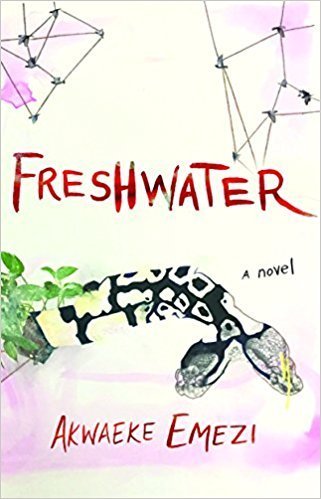
Freshwater by Akwaeke Emezi
Ada begins her life in the south of Nigeria as a troubled baby and a source of deep concern to her family. Her parents, Saul and Saachi, successfully prayed her into existence, but as she grows into a volatile and splintered child, it becomes clear that something went terribly awry. When Ada comes of age and moves to America for college, the group of selves within her grows in power and agency. A traumatic assault leads to a crystallization of her alternate selves: Asụghara and Saint Vincent. As Ada fades into the background of her own mind and these selves--now protective, now hedonistic--move into control, Ada's life spirals in a dark and dangerous direction.
Told from the perspective of the various selves within Ada, and closely based on the author's own personal experiences, Freshwater explores the metaphysics of identity and mental health, plunging the reader into the mystery of being and self. Freshwater dazzles with ferocious energy and serpentine grace, heralding the arrival of a fierce new literary voice.
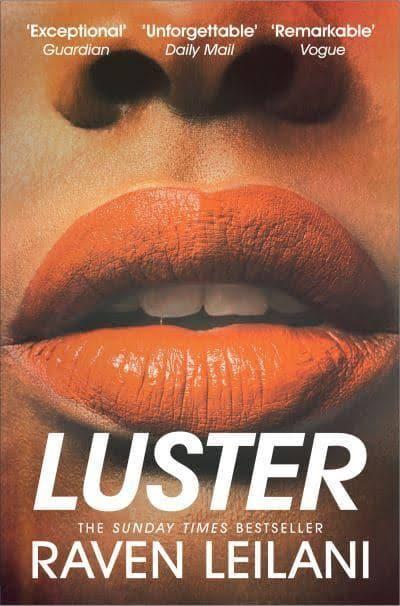
Luster by Raven Lelani
Edie is just trying to survive. She’s messing up in her dead-end admin job in her all-white office, is sleeping with all the wrong men, and has failed at the only thing that meant anything to her, painting. No one seems to care that she doesn’t really know what she’s doing with her life beyond looking for her next hook-up. And then she meets Eric, a white middle-aged archivist with a suburban family, including a wife who has sort-of-agreed to an open marriage and an adopted black daughter who doesn’t have a single person in her life who can show her how to do her hair. As if navigating the constantly shifting landscape of sexual and racial politics as a young black woman wasn’t already hard enough, with nowhere else left to go, Edie finds herself falling head-first into Eric’s home and family.

Brunt Sugar by Avni Doshi
In her youth, Tara was wild. She abandoned her loveless marriage to join an ashram, endured a brief stint as a beggar (mostly to spite her affluent parents), and spent years chasing after a dishevelled, homeless 'artist' - all with her young child in tow. Now she is forgetting things, mixing up her maid's wages and leaving the gas on all night, and her grown-up daughter is faced with the task of caring for a woman who never cared for her.
This is a love story and a story about betrayal. But not between lovers - between mother and daughter. Sharp as a blade and laced with caustic wit, Burnt Sugar unpicks the slippery, choking cord of memory and myth that binds two women together, making and unmaking them endlessly.

Dogs of Summer by Andrea Abreu
High in the mountains of northern Tenerife, the sun hides behind a seemingly endless ceiling of cloud cover that traps the region's inhabitants in an abject, infernal heat. There, in a ramshackle village far from the island's glamorous beach resorts, two adolescent girls pass a treacherous summer in each other's all-consuming company.
The nine-year-old narrator is known to us only as Shit - a pet name given to her by her best friend Isora. Blonde, brash, beautiful Isora, who isn't afraid to mock the boys around town or gossip with the adults; who, though she is only one year older, has already grown breasts and pubic hair. Together, Shit and Isora wander the streets, shooing away the neighborhood's many pitiful dogs; they try to keep skinny by vomiting up sweets; they dream of shiny BMWs that will take them down to the beach, where they will finally get to enjoy the sea, just like the tourists whose vacation homes Shit's mother cleans for a living. But as June turns to July, and July to August, the narrator's simmering love for her friend erupts into a painful sexual awakening, just as Isora begins to heed the first calls of womanhood. Shit tries to keep up with her, but learns that growing up is a path one must walk alone; a journey so solitary, it can lead even the most intimate friendships to violent ends.

Ugly Girls by Lindsay Hunter
Perry and Baby Girl are best friends, though you wouldn’t know it if you met them. Their friendship is woven from the threads of never-ending dares and power struggles, their loyalty fierce but incredibly fraught. They spend their nights sneaking out of their trailers, stealing cars for joyrides, and doing all they can to appear hard to the outside world.With all their energy focused on deceiving themselves and the people around them, they don’t know that real danger lurks: Jamey, an alleged high school student from a nearby town, has been pining after Perry from behind the computer screen in his mother’s trailer for some time now, following Perry and Baby Girl’s every move—on Facebook, via instant messaging and text,and, unbeknownst to the girls, in person. When Perry and Baby Girl finally agree to meet Jamey face-to-face, they quickly realize he’s far from the shy high school boy they thought he was, and they’ll do whatever is necessary to protect themselves.

Jesus Saves by Darcey Steinke
Jesus Saves , a New York Times Notable Book of the Year, is a chilling horror story, a suburban gothic set not among green manicured lawns and cul-de-sacs, but the trash-filled woods between subdivisions and superhighways and the strip malls and duplexes on the back side of town. It’s the story of two Ginger, a troubled minister’s daughter; and Sandy Patrick, who was abducted from summer camp and now smiles from missing-child posters all over town. Layering the dreamscapes of Alice in Wonderland with the subculture of River’s Edge , Darcey Steinke’s Jesus Saves is an unforgettable passage through the depths of literary imagination.

Cats Eye by Margaret Atwood
Cat's Eye is the story of Elaine Risley, a controversial painter who returns to Toronto, the city of her youth, for a retrospective of her art. Engulfed by vivid images of the past, she reminisces about a trio of girls who initiated her into the fierce politics of childhood and its secret world of friendship, longing, and betrayal. Elaine must come to terms with her own identity as a daughter, a lover, and artist, and woman—but above all she must seek release from her haunting memories. Disturbing, hilarious, and compassionate, Cat's Eye is a breathtaking novel of a woman grappling with the tangled knots of her life.
7 notes
·
View notes
Text
A former Folsom police officer fired for using racist language and allegedly engaging in sexual activity while on duty is suing the city claiming he suffered harassment and discrimination from colleagues during his nearly 20-year career with the city.
The lawsuit, filed Sept. 6 by former police Officer James Dorris, who is Asian American, is one of three recent allegations revolving around racial harassment lodged against the Folsom Police Department.
“As a result of the unlawful conduct of defendants, (Dorris) has suffered severe emotional distress, wage loss and loss of benefits, diminution of his lifetime pension benefits, damage to his career,” the lawsuit filed in Sacramento Superior Court says.
Dorris’ attorney, David Foyil, did not respond to a request for comment.
Christine Brainerd, a spokeswoman for the city of Folsom, said in a statement that the accusations by all three former employees were “inconsistent” with the standards of Folsom Police Department.
“The city of Folsom does not tolerate any form of discrimination or harassment and takes these allegations seriously,” Brainerd wrote, adding the city values diverse backgrounds and inclusivity of all its employees.
Brainerd also called Dorris’ lawsuit “retaliatory” after he was let go for allegations of misconduct in an employment decision approved by an independent arbitrator.
Dorris, who was hired around 2005 and fired by Folsom in 2022, allegedly violated 13 codes of conduct listed in the Folsom Police Department Policy Manual, a memorandum of understanding between the city of Folsom and the police union, the Folsom Peace Officers Association, according to a letter sent to Dorris by Folsom City Manager Elaine Andersen.
The alleged violations include: having a woman perform oral sex on him at least four times while on duty, lying during Folsom police’s internal investigation about misconduct and sending racist text messages prejudicial against African Americans.
The details of each accusation are unclear. The documents provided by the city of Folsom are heavily redacted and provide only a glimpse into why Dorris was fired.
The independent arbitrator, David A. Weinberg, reviewed the city’s decision and said many of the accusations levied against Dorris were not sufficiently proven by the city.
But Weinberg found the city correctly concluded Dorris should be fired for lying during the internal investigation and for sending racist texts.
On Jan. 19, 2020, Dorris texted someone, “That’s why I’m going to arrest as many blacks as I can tomorrow to celebrate,” according to the letter written by Andersen. The letter redacted the recipient’s name.
The next day, Jan. 20, 2020, was Martin Luther King Jr. Day. On that day, Dorris texted, “At the jail arrested a black guy,” Andersen’s letter said.
Dorris defended himself during Folsom police’s internal investigation, and said it was “crude humor and (an) inside joke” with a person whose name is redacted. He also said the comments about the holiday for the slain civil rights leader have no nexus to his employment and that it was a private conversation never intended to be made public.
Weinberg pushed back against Dorris’ defense.
“Such comments, even if made in jest, casts the department in the worst possible light and could provide reason for otherwise sound police actions to be overturned in a court of law,” Weinberg wrote.
The lawsuit’s allegations
Dorris accuses several officers of racist behavior starting in 2007, according to the lawsuit.
Officers put “anti-Asian and racially offensive” stickers on his locker, the lawsuit alleges. It also says police made comments about his slanted eyes.
“During every shift that (Dorris) worked, he would see these stickers and they would destroy his morale at the beginning of each shift,” the lawsuit says. “There would be times where (Dorris) would pull over in a parking lot and get emotional.”
The discriminatory behavior continued to escalate, the lawsuit says.
According to the suit, one sergeant attempted to mimic an Asian accent and would ask him “in a mocking manner” to pronounce arrestees’ Asian names.
Another sergeant was teaching Dorris and up to 20 other officers at a shooting range in August 2020. The sergeant turned to him and said “let me make it clear to you Dorris, ‘Ching Cha Ching Chang Cho. Understand now?’”
“After they finished at the range, (Dorris) remembers driving home and becoming overwhelmed with emotion,” the lawsuit said. “(Dorris) pulled over and cried uncontrollably. (Dorris) felt helpless and indeed broken.”
Attorneys in the case are scheduled to appear March 8 for a case management hearing.
Other instances of racist cops?
Two other former officers — Kimberly Moy Lim-Watson, who is of Asian descent, and Homer Limon, who is Mexican American — reported similar racist incidents through attorney Foyil, claiming the department failed to reprimand others for alleged racist comments.
The claims were part of complaints of employment discrimination filed in 2023 by the officers with the state of California that were provided by Folsom city officials.
No lawsuits have been filed by either Lim-Watson, who is still a sworn officer, or Limon, who retired in Sacramento Superior Court, and neither could be reached for comment.
6 notes
·
View notes
Text
NFS. This is for my yearbook lovers. Emporia High School in Emporia, Kansas. Senior class of 1932. Found in my town destined for the trash in a thrift store.💎Story about defeating racism, a cute Christmas story about dogs (ADORABLE doggie guest list)☃️🐕.



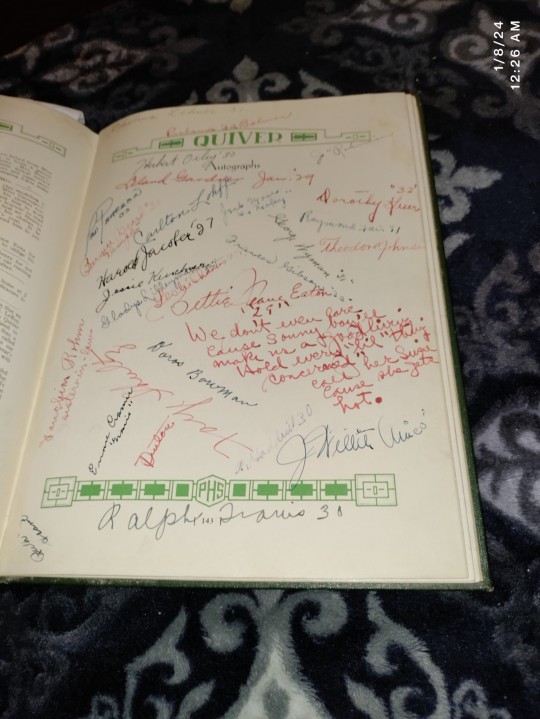
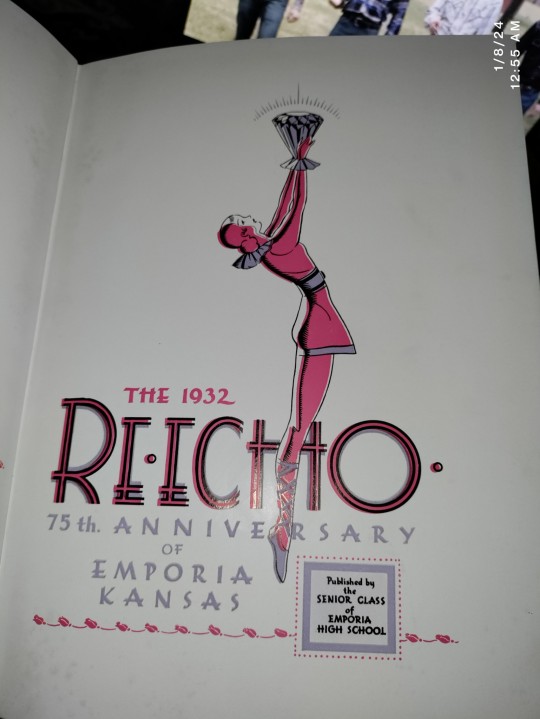
Look at that handwriting! WOW! 🖋️
UPDATE🌠~ I may be able to reunite the yearbook with the family! I couldn't find anything on Google about her. And her face in a diamond shaped portrait like the cover (just connected that). I thought that the address she had written in was the high school address. It's not! That would be 110 years old today at the youngest. She could still be alive. And I'm not sure if her family still lives in the original house, but it would be wonderful to try to connect the family. It's like time travel! Being able to see your relative over 100 years ago and what they were like.
If the art deco style cover, the time gone by elegant handwriting and signatures isn't a treat itself- I found out some fascinating progressive history! Has nothing to do with the yearbook, but with what the owner of the yearbook (Beth) was experiencing at this time. I got a little swept away in the history.

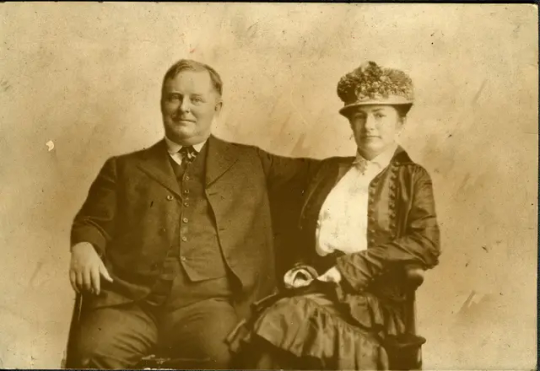
91 years ago in the Dust Bowl era, a man named William Allen White (pictured with his wife) was running for governor. He owned the newspaper agency in town. His #1 goal was to get rid of the KKK. His daughter Mary (wait til you hear about her)! went to one of their public meetings and got ahold of his dog. When she released him, he went directly to his owner revealing who he was behind the mask. So he was outed in front of everyone.
Both dad and daughter frequented Stringtown. This was the section where African American people lived in that time where they befriended folks.

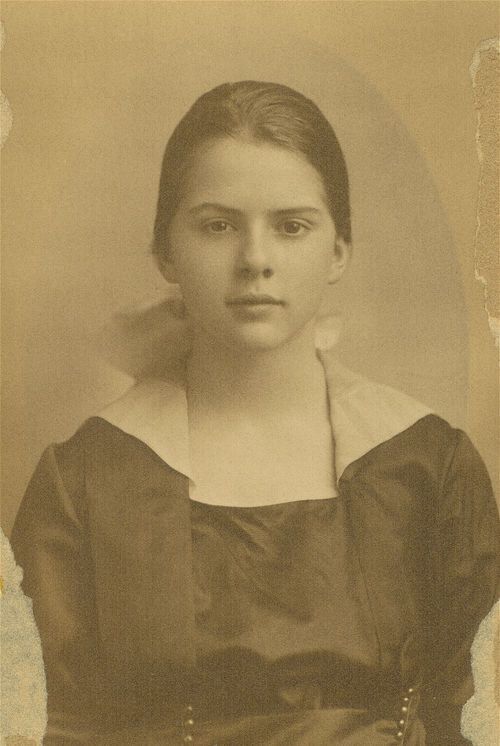
His daughter was as wild as the prairie winds. I hope I can do her memory some justice. At 16, her dad called her a "Peter Pan". She didn't want to grow up. She didn't like to wear dresses (preferred khakis), didn't want to settle down with one boy and was known for riding around town waving to everyone. Black or white, old or young, man or woman. She was never really religious, but she knew the church was an agency of help for a lot of people so she joined just to help the homeless and her favorite was the big Thanksgiving feast.
the 1920s, William received a letter from a young black man, Floyd Lucas, who wanted to attend college in the town to stay close to family, but the college denied him his dream of being a doctor because they feared he would cause other students to leave.
So William wrote a letter on Floyd's behalf telling them to enroll him. And he became the first person of color to attend college in the town ever.
In 1933, George - er - Sandy White (his 15 year old Scottish Terrier) was throwing a Christmas party. He even decked out a tiny Christmas tree just for his little dog with bologna on the branches. "Refreshments were served at 11:45 and completely eaten in 27 seconds".
Invited guests were Snowball and Chigger Lindsay, WuWu Thudim, Pal Triplett, Tex Dando, Jack Williams, Pepper Just, Bingo Hirschler, Mack Hughes, Mick Swap, Snappy Lowther, Ricky Lambert, and Gerald Newman Sprague. Jack Williams, whose master was 15-year-old Rex Williams, was the best decorated dog at the party. He had a wide pink ribbon tied around his stomach with a bow knotted over his back.
Mary's life ended tragically young at 16 (picture #2). Her last day on Earth was filled with happiness. She had been working really hard on a paper and wanted to get some fresh air. I believe she dealt with sickness when she was a child and I think she still had some complications as a teenager and so riding helped her feel free. And her dad joked in the obituary that she would have laughed that she met her end this way because horses would always fall in her lap and love to be petted by her, but then she tragically fell off a horse and fractured her skull in a terrible accident.
Her community and her family remember her as a rambunctious teenager that just did not want to settle down. She was tired of being a perspective mayor's daughter and just wanted to be like any other teenager and her own person like teens of today. She had a thirst for justice in the world. I wonder what her life could have been like if she had lived past being 16.
At her funeral, they played Beethoven's Moonlight Sonata and ended with Tchaikovsky's pathetic Symphony (yep that's the actual name)! She loved to listen to it on the phonograph in certain moods and then it ended with the Lord's Prayer by her friends who were also her pallbearers.
Her dad says, "She brought home riotous stories of her adventures. She loved to rollick; persiflage was her natural expression at home. Her humor was a continual bubble of joy. She seemed to think in hyperbole and metaphor. She was mischievous without malice, as full of faults as an old shoe. No angel was Mary White, but an easy girl to live with for she never nursed a grouch five minutes in her life."
Then said about this when the funeral ended. "A rift in the clouds in a gray day threw a shaft of sunlight upon her coffin as her nervous, energetic little body sank to its last sleep. But the soul of her, the glowing, gorgeous, fervent soul of her, surely was flaming in eager joy upon some other dawn."
What a fascinating town! I would never have known anything about Kansas without that yearbook. Now I'm going to be on the hunt for more yearbooks and antiques from this era from Emporia, Kansas! I wonder what the lives of these seniors were like and if perhaps they knew the family.
Sources ~
https://www.emporia.edu/libraries-archives/special-collections-archives/access/special-collections/black-emporia-interpretations-and-connections-collection/black-emporia-stringtown/
https://www.kshs.org/kansapedia/mary-white-obituary/10159
5 notes
·
View notes
Text
Intimate Apparel: In 1905 New York, Esther is a lonely, single African-American woman who makes her living sewing beautiful corsets and ladies’ undergarments. There is warm affection between her and the Orthodox Jewish man who sells fabrics to her, but any relationship between them is completely forbidden. Seeking love and romance, Esther eventually embarks on a letter-writing relationship with a mysterious suitor laboring on the Panama Canal. When he moves to New York they embark on an unhappy marriage, leading Esther to realize that only her self-reliance and certainty of her own worth will see her through life’s challenges.
A Raisin in the Sun: We meet the Younger family the day before they are getting a $10,000 insurance check from the death of the father, Walter Younger. Different members of the family have different ideas of how to use the money. Tensions increase as each member of the family tries to get their own way, eventually threatening to break apart their foundation completely. The stakes continue to climb as questions about identity, class, value, race, and love become forefront issues, and outsiders to the family make it impossible to forget the world that the Younger family cannot seem to escape.
Propaganda under the cut!
Intimate Apparel:
No propaganda submitted
A Raisin in the Sun:
"i had to read this for school" well yeah and it went hard. so.
I just aughghhh oughhhhhh aaaaauuuuuuufhfh the talk of dreams and how the characters match up to certain lines of the Langston Hughes poem,,,,, and the interesting family dynamics that arise from the Younger family’s situation,,,,,,,
It’s a classic for a reason! A truly groundbreaking play
7 notes
·
View notes
Text

Today In History
Gwendolyn Brooks was an amazing poet, author and teacher-best known as the first African American to win a Pulitzer Prize for her book ‘Annie Allen’ on this date May 1, 1950.
Her work often dealt with the personal celebrations and struggles of ordinary people in her community.
Throughout her prolific writing career, Brooks received many more honors. A lifelong resident of Chicago, she was appointed Poet Laureate of Illinois in 1968, a position she held until her death 32 years later. She was also named the U.S. Poet Laureate for the 1985–86 term. In 1976, she became the first African American woman inducted into the American Academy of Arts and Letters.
CARTER™️ Magazine carter-mag.com #wherehistoryandhiphopmeet #historyandhiphop365 #cartermagazine #carter #staywoke #gwendolynbrooks #book #blackhistorymonth #blackhistory #history
#carter magazine#carter#historyandhiphop365#wherehistoryandhiphopmeet#history#cartermagazine#today in history#staywoke#blackhistory#blackhistorymonth
49 notes
·
View notes